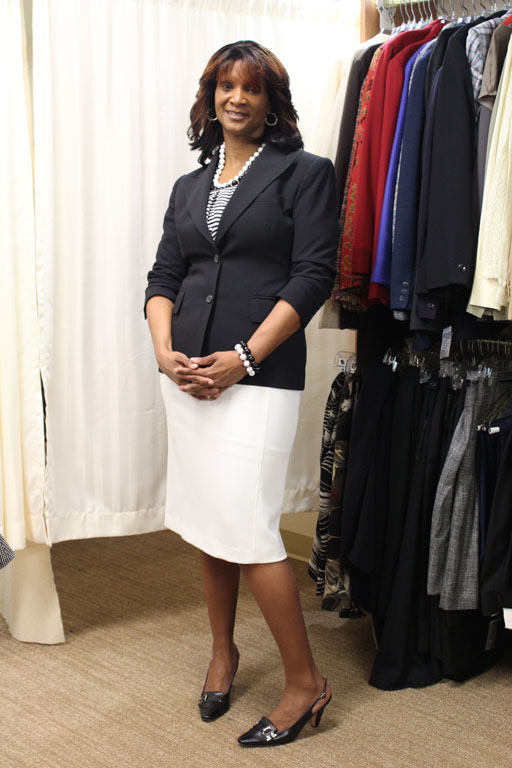
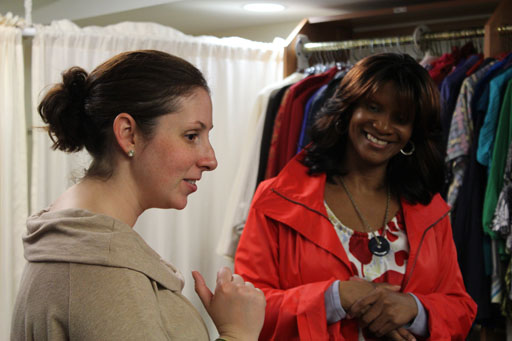
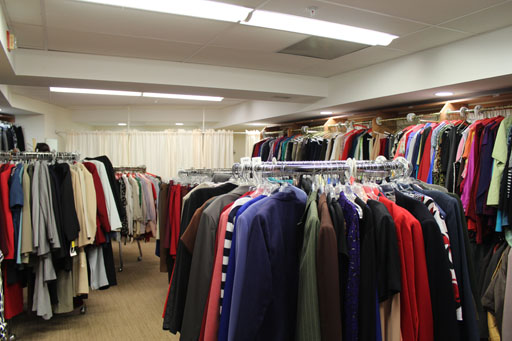
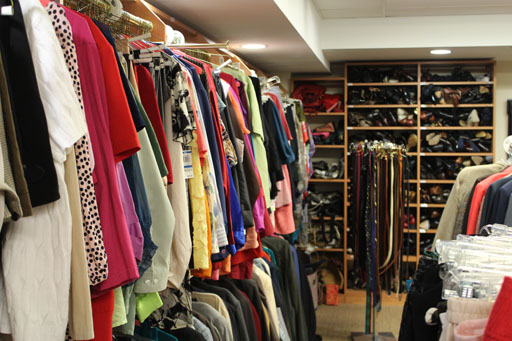
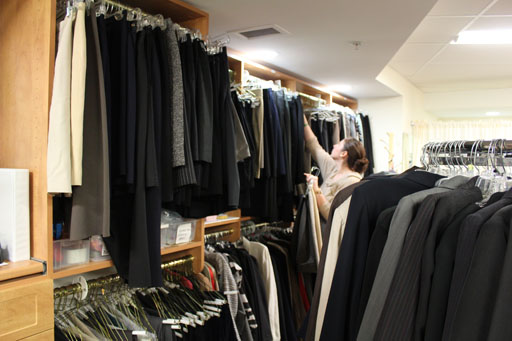
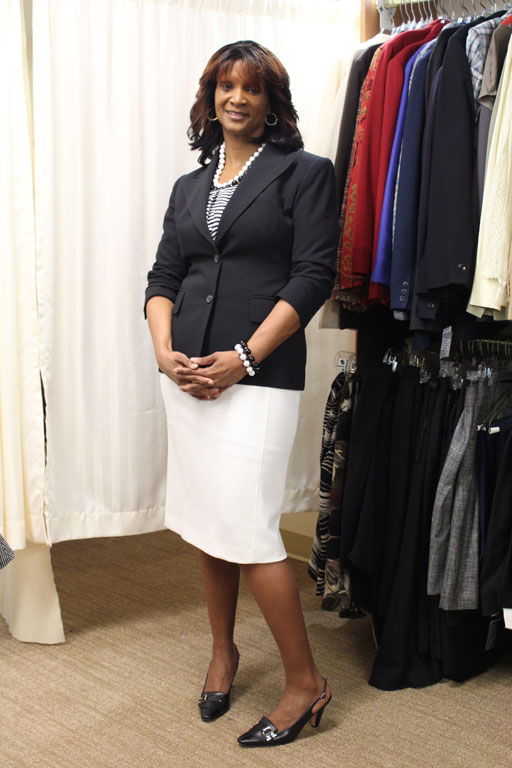
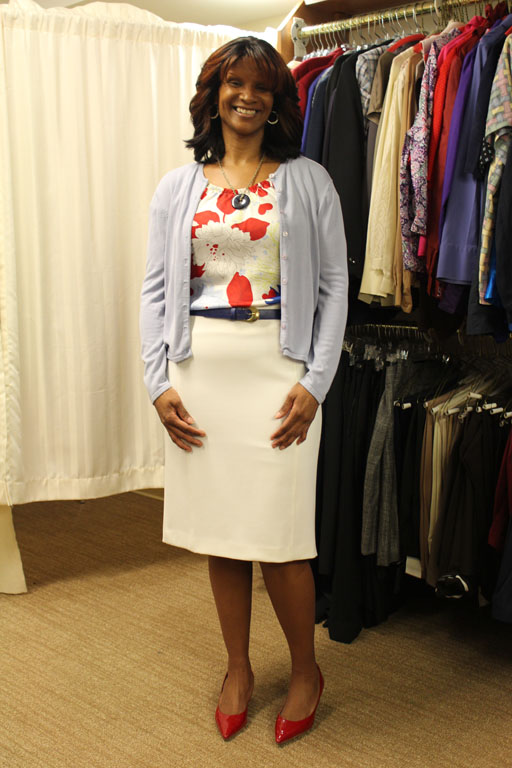
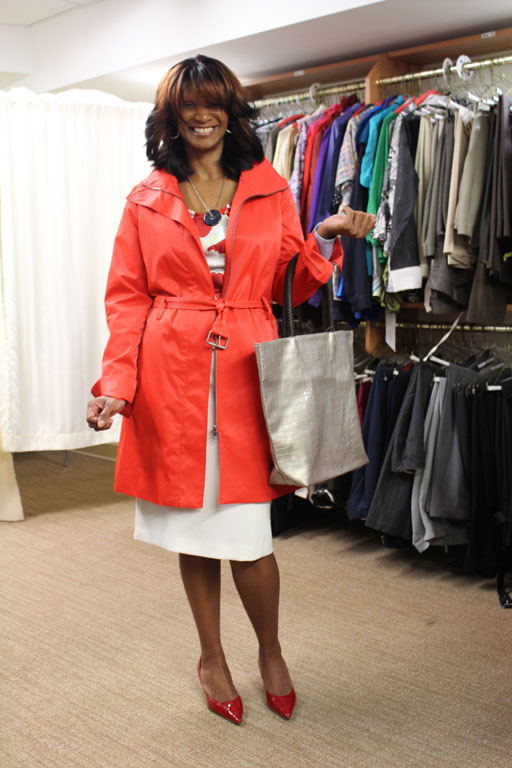
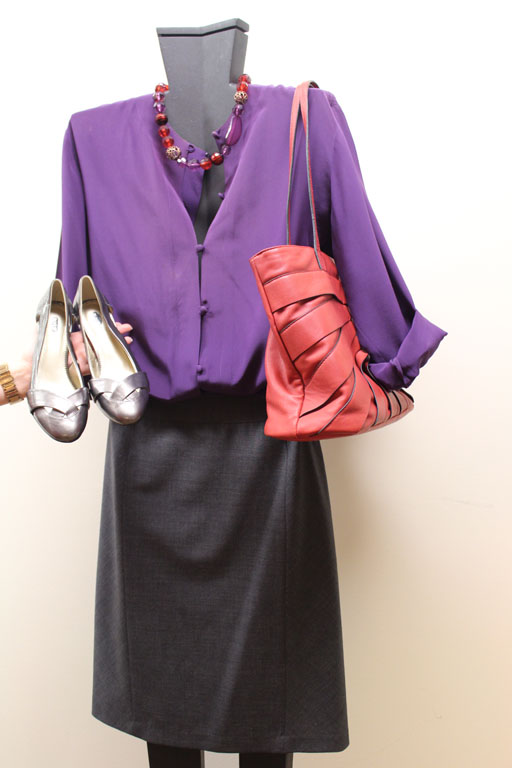
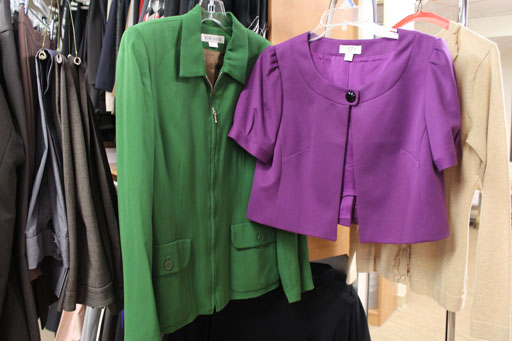
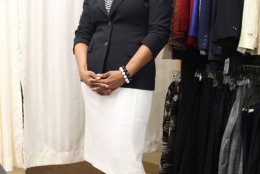
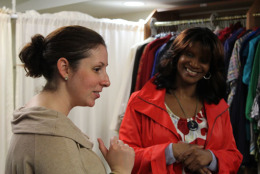
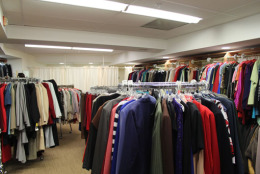

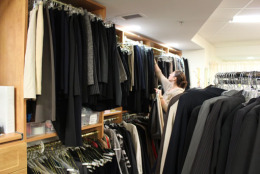
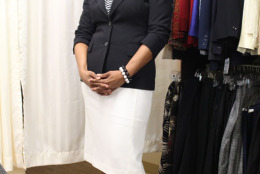
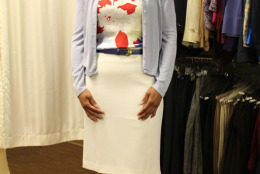
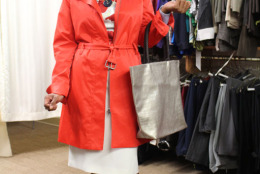
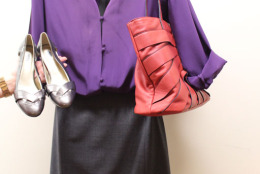
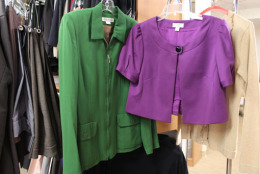
Paula Wolfson and Alex Beall, wtop.com
WASHINGTON – Ivana Willis knows the power of strong job skills, an engaging personality and the proper work wardrobe.
She has turned her life around with determination, grit and a little help from a nonprofit called Suited for Change — which provides low-income women with interview-ready clothes they need to get a job.
Willis recently returned to Suited for Change for a little one-on-one advanced style tutoring from Style for Hire’s Lisa Tumbarello.
The two immediately bonded over blazers and blouses and chatted about finding the perfect outfit for a job interview on a tight budget.
Tumbarello advises letting your look personify your resume.
“You put your look together and show a dynamic look, but still be very professional,” she says. “They will take that as a message this person can get it together in time and be reliable and looking good.”
WTOP was along for the ride as Lisa combed through the racks in the “boutique” that Suited for Change fills with work-appropriate clothing for the job-seeking women that come through the doors of its McPherson Square Headquarters.
Willis is one of the agency’s biggest success stories. She once battled depression so severe she lost her job. But she rebounded and with a little help from Suited for Change, she landed a new position with the American Psychological Association.
She now serves as a role model for others. And for one day, she was a fashion model for Tumbarello, who put together a series of budget-friendly outfits, and offered some advice for women looking for work and for cash-strapped new hires hoping to put an office wardrobe together when the paychecks start coming in.
Own the basics.
Tumbarello says to start with three matching pieces: a jacket, a pair of pants and a dress or skirt. Pick a neutral color for these basic wardrobe building blocks, and try navy or charcoal, which tend to flatter more skin tones than black.
Then, add in three or four colored and fitted tops or blouses. When your budget allows, purchase two jackets in a bolder color or an interesting texture that can mix and match with the basics.
Don’t forget to accessorize.
Pair your work outfit with some professional-looking shoes. Tumbarello says there are comfortable pointed-toe shoes out there, and they work on women of all heights.
You can add in a bright necklace or bracelet, but make sure it isn’t too bold or noisy. And don’t forget your work handbag. Keep it simple and tasteful and leave the canvas totes at home.
Dress for interview success.
For your interview, keep it conservative, especially for the first round. But classic doesn’t mean boring. You don’t have to stick to a full black suit with a white blouse. Mix it up with a white skirt, black jacket and fun blouse. Try playing with color by adding a bold belt or shoe.
Frame your face.
Draw attention to your face with a collar, a necklace or a top with detail around the neck. Avoid going too bold or crazy. You don’t want to overshadow your skills and accomplishments with your clothing.
The cardigan is the new jacket.
It doesn’t have to be a structured jacket. Once you get the job, you can stray from the traditional suit coat to a cardigan. They come in different colors, lengths, shapes and fabrics. Use a belt to change its shape, wear a lightweight, open-knit cardigan for summer, or try one with metallic thread for a night out.
Make it versatile.
Break apart your basic three-piece suit and match it with your individual pieces to create more outfits and get more mileage out of them all. Different combinations will let you go from office wear to casual Friday to a night out.
Shopping on a budget.
There are plenty of places to find workplace pieces on a budget. Thrift and consignment stores are good, and low-income women working with certain social agencies and job training programs can turn to places like Suited for Change.
Willis also says suggests “freecycle” — an online “swap meet” for clothes.
If there is one point on which Tumbarello and Willis strongly agree, it is the importance of fit, no matter the budget.
“Get things that fit and are for the size you are now, not the size you want to be in three months,” Willis says.
Tumbarello says even a thrift shop find can benefit from a little “nip and tuck” from a tailor, or — better yet — a friend or relative who can sew.
Follow @WTOP and @WTOPliving on Twitter.







